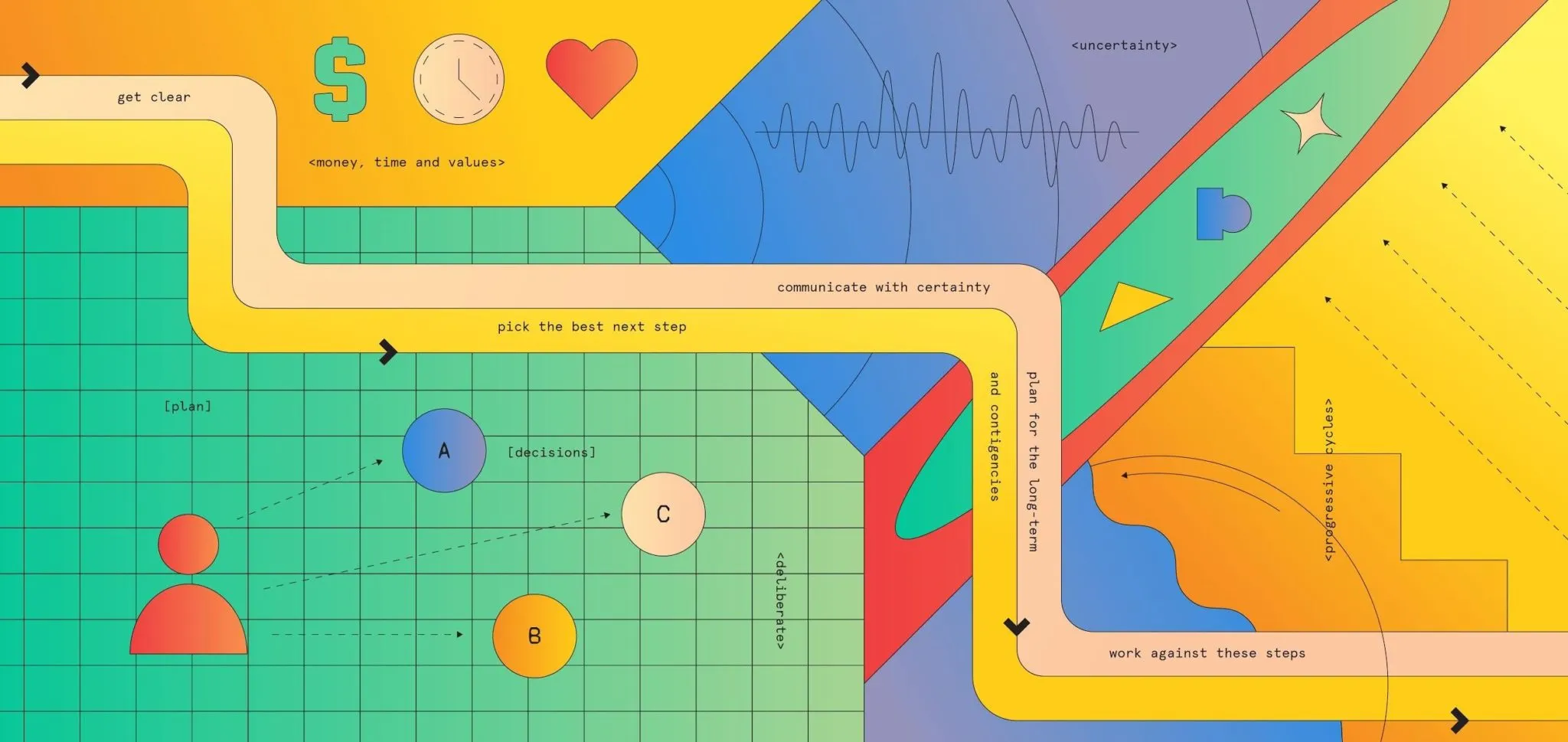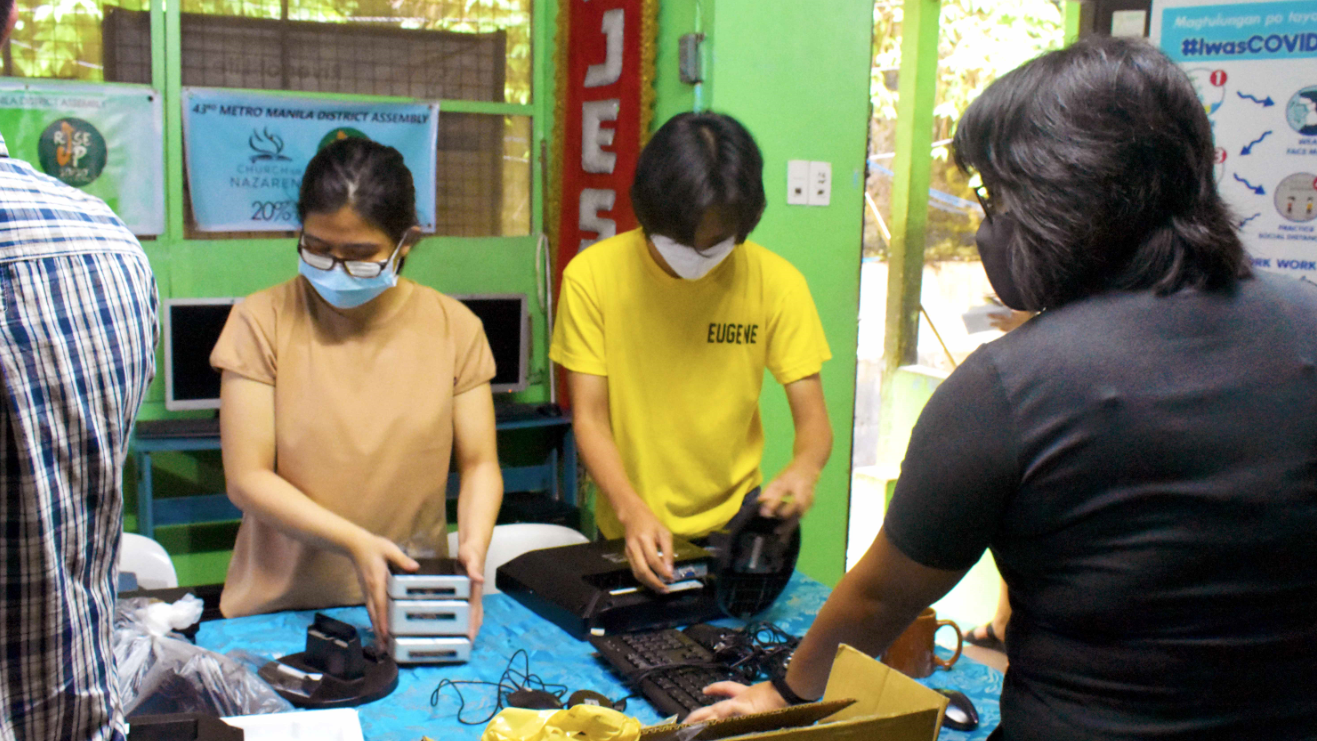Suneet Bhatt graduated from Fuqua in ‘06. He’s been working for over 20 years and as a result of that, and really, not much else, he’s gathered some experiences he’s happy to share. When he’s not helping run Boldr, he’s thinking up new children’s books for his side hustle, Dream Village. No matter what he’s doing, he’s trying his darndest to match the bar of excellence set by his children, as a father. Thankfully they’re generous and forgiving, as he’s admittedly still a work in progress.
I have impeccable timing.
When I was in high school and would try and sneak back home after curfew, I always managed to do it just as my parents had decided to go to the bathroom or get a glass of water. Cursed by either side of hydration.
In the past 10 years, I’ve joined four organizations at a Leadership level only to have them immediately hit their worst performance month within weeks of my joining. That’s just curses.
In January of this past year, I joined Boldr, a mission-driven outsourcing company based in the Philippines after serving on their Board for nearly three years (from effectively the day they were founded). I don’t need to tell you what happened next as we’re all living it now.
The effects of COVID-19 on the entire world are crushing (isolation, death tolls) and humbling, with subtle silver linings (like the people in India seeing the Himalayas for the first time in decades). Those silver linings are hard to find, I assure you; but we need them to get through the rigors of full-time work, full-time parenting, and full-time quarantine.
What the pandemic teaches you
One of the things that are gotten to me the most, is the number of out-of-the-blue, downright random, calls, texts, and emails I’ve received from peers and friends asking me for advice on how to navigate what’s ahead for their organizations. It happens when you’re an old man, with gray hair, and sporadic experience across a wide array of challenging professional contexts.
“We’re about to initiate a RIF (Reduction in Force).”
“I have no idea if we’re going to be able to make it past next month.”
“Yo yo, quick question on layoffs.”
I’ve worked through September 11th, the 2008 recession, a few private equity-based bloodbaths, and a poor response to a VC fundraise. I’ve seen and then had to lead and orchestrate many difficult pivots and hard conversations. I spent almost a year working on alternate housing options for families affected by Katrina. The benefit of time has given me experiences, and those experiences taught me a few things that have thus far helped us navigate the world leading up to and post COVID-19, and helped me quickly and clearly articulate advice back to those who reached out during challenging recent times. If helpful, based on feedback from Stephen Fusi, I wanted to encapsulate some of that advice and guidance here for our community. There’s so much more than what follows here; and so many people to thank and acknowledge. For now, I wanted to just start.

Step 1: Get incredibly clear about three things: your money, your time, and your values.
Look at any successful company, and you’ll see that the Executive Team and ideally the entire company, have strong alignment along these three levers. Look at any failed company, and you’ll often see dissonance in those same places. On a more individual level, the same can be said for successful and disgruntled team members — alignment means the former, disconnect leads to the latter.
Which is why I always recommend, in a time of change and now especially in a time of crisis, spending your time getting laser focused on three things:
- the money you have to work with,
- the time you have before your next set of critical decisions, and
- the values you want to embody as you navigate forward.
Recent announcements have talked about two options or two choices; I disagree. The smartest discussion and the best results result from triangulating against these three levers.
These three levers are what you will use to contextualize your vision. A vision is an ideal. These three levers define the framework for how you go about pursuing and realizing that vision.
At Boldr, as a self-funded services business investing ahead of growth, our cash was lean. As a result, our timing was immediate. Yet as a mission-driven company — one who’s placed an emphasis on our people first and was built as a response to traditional, more exploitative outsourcing models — our values were clear: take care of our team members and honor our commitments.
This may sound like a challenging problem, but for our leadership team, it became immensely clarifying. We didn’t have many options.
We had to find ways to preserve cash (this meant leaning into client relationships, protecting revenue, eliminating excessive costs).
We had to find ways to buy time (this meant identifying time horizons with clear objectives, while not wasting a moment).
And we had to be clear about our values: from the moment COVID-19 shifted from an existential threat to one that would soon force a disruption in our team’s lives in the Philippines we went public that every decision we made would be focused on two things: (1) team health and safety, first, followed by (2) honoring our commitment to our clients.
In a few quick moments, our framework and our playing field had been clearly defined. We were clear on how we had to move forward.

Step 2: Pick the Best Next Step.
In times of crisis, the most impactful decision is understanding how much time you have to make your decisions. I can’t explain the approach abstractly, so let me bring the concept to life with an example from our experience.
Within 48 hours, the Philippines had gone from a country monitoring COVID-19, to a country on the brink of massive social constraints being implemented. On March 17th, all forms of mass transportation were suspended indefinitely, movements across cities were limited and regulated, and strictly enforced curfews made it challenging to operate as a 24 hour company. The government also required us to produce proof of employment for our over 300 employees to allow them movement to and from their residence as we were transitioning to remote work.
Boldr followed suit. We similarly had gone from monitoring COVID-19 in the abstract (as far back as early January) to jumping into action based on a Presidential address signalling the start of restricted social movements within the country.
Our critical decision happened going into Philippine President Rodrigo Duterte’s first address. In response to the President addressing the Philippines as a whole, we focused less on his immediate message (some short-term restrictions on movement) and took the initial regulations to their logical extension and extrapolation: we had to plan for a total lockdown where people were unable to leave their homes. Instead of focusing on the incremental and progressive lockdowns we asked the right initial question: what would it take to flip our entire 300 person company from working in an office, to being set up to work fully remotely. And by doing so, we prepared for the worst case scenario while preparing ourselves — and our team members — for everything in-between.
Among extensive uncertainty, we had identified a clear path and a clear decision point. A decision that gave us flexibility in the short-term while also preparing us for the largest and most extreme outcomes that we could possibly face: what happened if everyone had to work from home? By solving for that problem, we ended up solving for everything in-between. If some people were restricted. If some people were affected. If some regions were off-limits. We were equipped to handle all scenarios. By picking the right decision we were able to give the team clarity while also managing against incremental uncertainty. We made an absolute decision to give people clarity, absolutely.
It worked out well. Over the course of the next week, the Philippines government evolved its story and progressed its restrictions. As we understand it, many companies who under planned were caught in a constant state of iteration, chasing the most recent set of rules the President would release. We were able to proceed undistracted because we’d set the highest bar and standard; and then built a plan against it. Our clients acknowledged us for it; but more powerfully, our team members celebrated us for it. While their friends and family members were scrambling, our team members were transitioned, set up, and ready for what was coming next.
Even though nobody knew what precisely that would be.
The team built a plan to flip 100% of the company remote in 1 week. We pulled it off and went live without disruption to our clients due to Herculean efforts by many team members. Clarity eliminates noise and distraction, which gives people confidence in their work as well as clarity and constraint within which to problem solve and innovate.

Step 3: Communicate about the Uncertainty, with Certainty
Five weeks ago, nobody could have predicted where we’d be today. If they’d attempted and were right, people would have assumed they were crazy to begin with. If they’d attempted and were wrong, well, people would understand but they’d still have been wrong and operating against their predictions would have been disastrous.
As a leader, it’s important to make sure your team continues to operate with clarity as you move to the next step. At Boldr, we leaned into the uncertainty and used that to create some aircover and space for the broader decisions we needed to make. But before getting to those broader and longer-term decisions, we focused on making sure the team had clarity on their short-term and immediate actions in the day-to-day. Eliminating any noise and uncertainty around what they should be focused on in the moment created comfort and clarity for them, and space for us to start planning more broadly.
One of our most beneficial decisions was acknowledging that the full value of our business rests in the hands and on the shoulders of our team members working on the front lines for our clients every day. As a result, we spent an extraordinary amount of time profiling every team member in extraordinary detail. In 36 hours through surveying, shoulder tapping, and downright annoying persistence, we knew everything about every team member, from their locations (so we could map our changes to quarantine restrictions based on neighborhoods), to their at home setups (who could work from home, who needed support and setup to work from home), to the clients they were currently working with and the skills they brought to the table in the event we needed to reprofile. This robust data set put us in position to respond to any changes and obstacles the world would throw at us.
Lego pieces. The data sets we had on team members mounted to individual lego pieces that we could break apart and reassemble on the fly as needed to fit into new constructs and solutions.
Think hard about your business? What are your most important lego pieces?
We were clear with the entire team; nobody knew what was going to happen 1, 2, even 3 weeks out. But we knew that if we weren’t serving our clients well now, and if we weren’t equipping team members to safely and successfully work from home in 1 week — nothing else would matter. It was a clarifying and galvanizing first step for that reason.
Foundational. Overcommunication gets you rolled eyes. Undercommunciation gets you lower productivity and missed opportunities. Especially in times of crisis; where people’s thoughts and ideas naturally and unavoidably expand to fill the spaces between what you tell them so clearly.
Always take the rolled eyes.
With our team in the know, we shifted to client communications. We had to get client approvals, explicitly, for this shift to remote. The communications we had drafted for internal purposes served as the basis for our communications to clients. They appreciated the level of thought and care that went into our planning and in 48 hours we were able to secure approvals for every team member to work remotely — except for two teams working with highly sensitive information. For them? We responded quickly, and secured housing for them, and set up remote offices for them to work in fully secured environments as if they were in the office.
What’s amazing is how fast this framework allowed us to move. We identified Steps 1-3 as priorities in a few hours; and we had mobilized against them in less than 24 hours. Doing so equipped us to move 290 of our 300 team members into motion against a unanimously agreed upon plan to work remotely — in days.
Organizing and moving against this so swiftly, and communicating so transparently, required upfront work but created downstream space. By overplanning and over communicating early, we created space for leadership to start scenario planning atop this new, full modular and fully flexible, remote work team.

Step 4: Create Space for Longer-term Scenario and Contingency Planning
With the team moving aggressively against clear plans, a handful of Executives were able to take a step back from being involved in immediate business operations and instead focus on scenario planning. What if clients went out of business? What if team members got sick? How would we manage in all of these scenarios?
What I found most beautiful in it all, was that though we all had a variety of scenarios and sensitivities around risks and impacts; reconciling across team members really clarified what could happen (clients would leave us, we wouldn’t be able to serve clients) and within what range (we projected 30-50% impact on our business).
In 48 hours Boldr has shifted from monitoring, to crisis management, to scenario planning, to implementing contingencies.
What would happen if team members were unable to perform their duties (they got sick, they lost connectivity)? We identified backups, cross-trained team members, and even spoke to clients about prioritizing work streams and compromising on KPIs if we needed to. Our clients were wonderful, appreciative of the level of thought we were putting into maintaining our commitments.
What would happen when we lost business — not if, but when? We immediately set a target of 40% cost reductions to the business; and then, we went after it. Freezing non-client facing new hires. Eliminating variable costs. Reducing fixed costs. Then, we cut deeper. The Executive Team cut salaries 80%. The Management team was invited to help us bridge the divide in a way that worked best for them and in a way they could tolerate — the result was a collective salary cut of 36%. This was great. But we needed to cut more so we focused on shifting as many team members as possible into new client-facing roles (instead of hiring new team members, we’d focus on reallocating, retraining, and repositioning existing team members first.)
One of our most powerful moments happened here. When, after announcing all of what was ahead, a number of team members proactively messaged us and asked to contribute part of their salaries to the cause. Specifically, several team leaders asked us to reduce their salaries, if, in return, their team members could stay fully salaried and fully employed.
In a time of crisis we were witnessing our company pulling even more tightly, together.
Note: I want to say that I was extraordinarily proud of how we used out values to respond to our clients. We focused on working with every client in trying financial circumstances to mitigate their risks as well. Some of the most challenging, and some of the healthiest discussions we had, resulted from an honest discussion around our client’s pains — not about our contract, but about their needs and pains. The human side of this doesn’t start and end with team members, it should flow through the entire supply chain.

Step 5: Continue to Work Against the Above Steps in Progressive Cycles
We’re now 35 days out from the initial situation I outlined above. We have seen client losses in the projected ranges. However by continuing to operate against the above framework, we were also able to identify new opportunities to mitigate losses. More important than revenue losses, we’ve put an extensive effort on reprofiling our existing team members and finding them new homes.
We’re 35 days out, and we’ve played out the above cycle over ever-expanding timeframes. When this first started, we were operating in 2-4 hour windows and cycles. That shifted to 12 hour cycles. Then 24. After three weeks, we were able to shift to thrice weekly and this week, were operating in cycles that carry us between Mondays and Thursdays.
At the end of every cycle, and at the start of every new one, we start by objectively understanding our financial situation, our next critical, date or event driven timeframe, and our values. Always, our values.
As a Leadership team, we’re finally able to think beyond the immediate. For April, we were able to look up from the hours and days in front of us, and start to think about the entire month as a whole. As we enter May, our goal is to start setting plans through the end of June.
It feels right at this moment, but we know that things can change dramatically and we need to be ready, again. At the end of this cycle, or when the next haymaker comes our way.
No matter what powers the next cycle, we’re committed to being more deliberate and disciplined as a company. We’re committed to continuing to focus on our financial situation, the time we have until our next big moment (losing one of our biggest clients, having team members struggle with mental health issues at isolation, addressing prolonged quarantine measures), and most importantly, the values we have as an organization.
Team health and safety. Followed by commitments to our clients.
35 days later, can you believe it? We may be better off financially. We may be on a healthier trajectory today because of all the necessary work we did that we’d otherwise put off or found a reason not to do. 35 days later, we too can see the Himalayas.
Returning the Word “Need” to Its Purest and Most Powerful Definition
What I’ve written here cannot capture all of the work, coordination, effort, and sheer magic that went into our work as a company over the past 35 days. I’ve cried a few times at work in my life; always associated with saying goodbye. I’ve been moved to tears more times in the past 35 days than I have the past 20+ years because of the work and approach to work of our team. I’m struggling to find the words to celebrate and honor them. But I need to find them. In the purest sense, I need to find a way to let the team know how I feel.
There’s that word again. Need.
What COVID-19 has reminded me is ultimately, that we overuse the word need. So many of the things we needed: to survive, to do, to be, all washed away as the context changed.
As a business, there are only a handful of needs. Everything else is a choice. We’ve all heard so much about essential workers in recent weeks; not all of us can stake that claim. But we can all do better at focusing on essential work.
You need to know how much money you have to work with.
You need to know how much time you have to work with.
You need to know what kind of values are going to guide your work.
It’s amazing what truly is essential, too. What’s essential ends up being the answer to whatever fundamental questions you’re asking. If your question is “how are we going to 10x revenue”, well, what’s essential (and what your options are) will point in one direction.
But if your question is “how are we going to take care of our entire team” or “how are we going to honor our commitments and partnerships with our clients”, well, you end up with a very different definition of what’s essential.
I think companies, as we re-emerge after COVID-19, are going to be asking the latter questions more than they do the former. More on that in a different post.
We allow ourselves to be distracted by so many reasons to avoid operating with such clarity. We find reasons. In the midst of this incredible and unprecedented time, I find a silver lining in this simplicity. And this clarity. And this focus.
When we find a normal. A new normal. A return to the old normal. I plan on continuing to carry these simple principles with me; and to honor and pursue and manage against them with vigilance.
I am committed to returning the word need, to its purest and most powerful definition.
This article was originally published in Duke and Fuqua School of Business Cei Alumni Blog on May 2, 2020 and Business 2 Community Blog on June 2, 2020.


